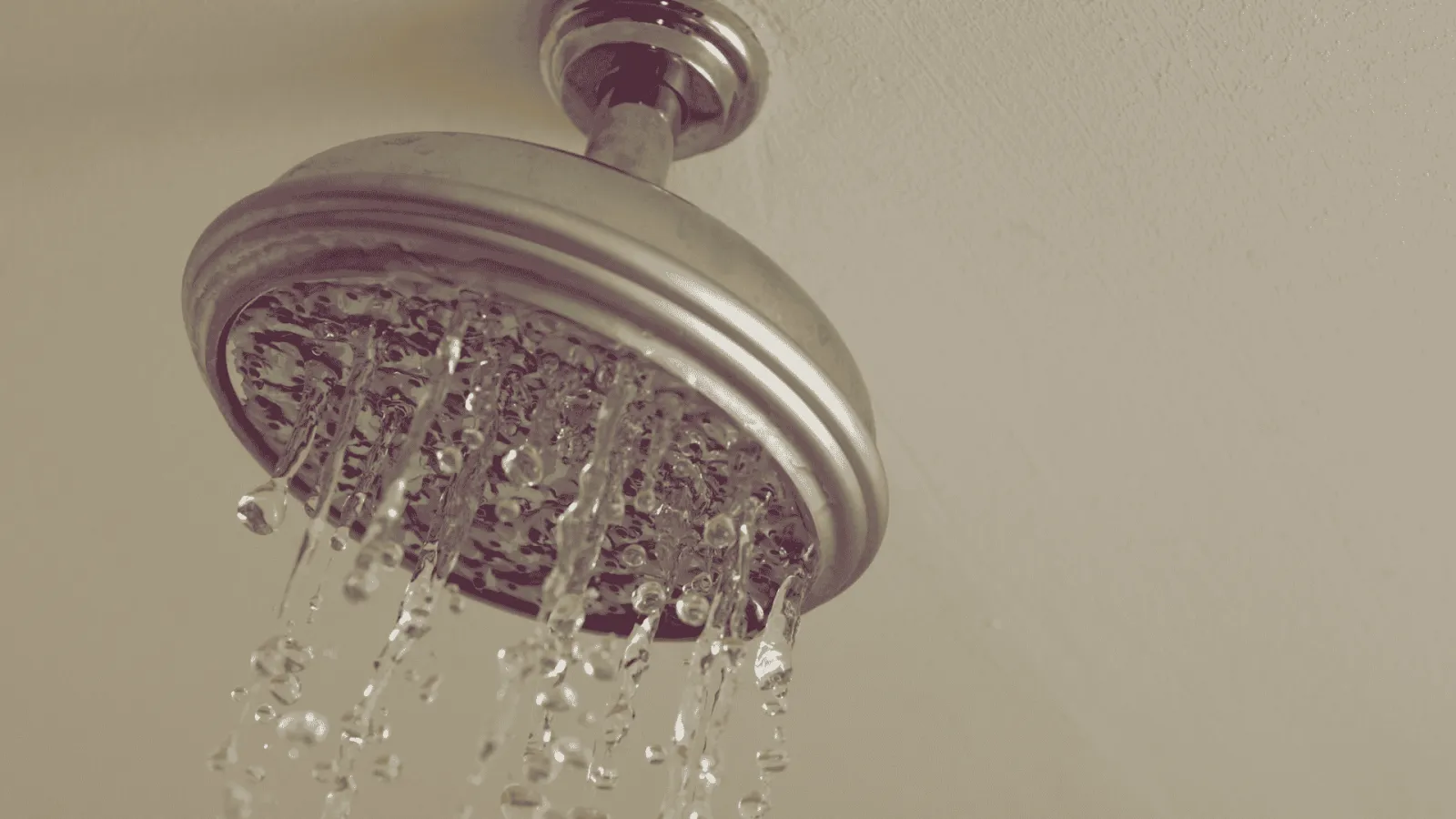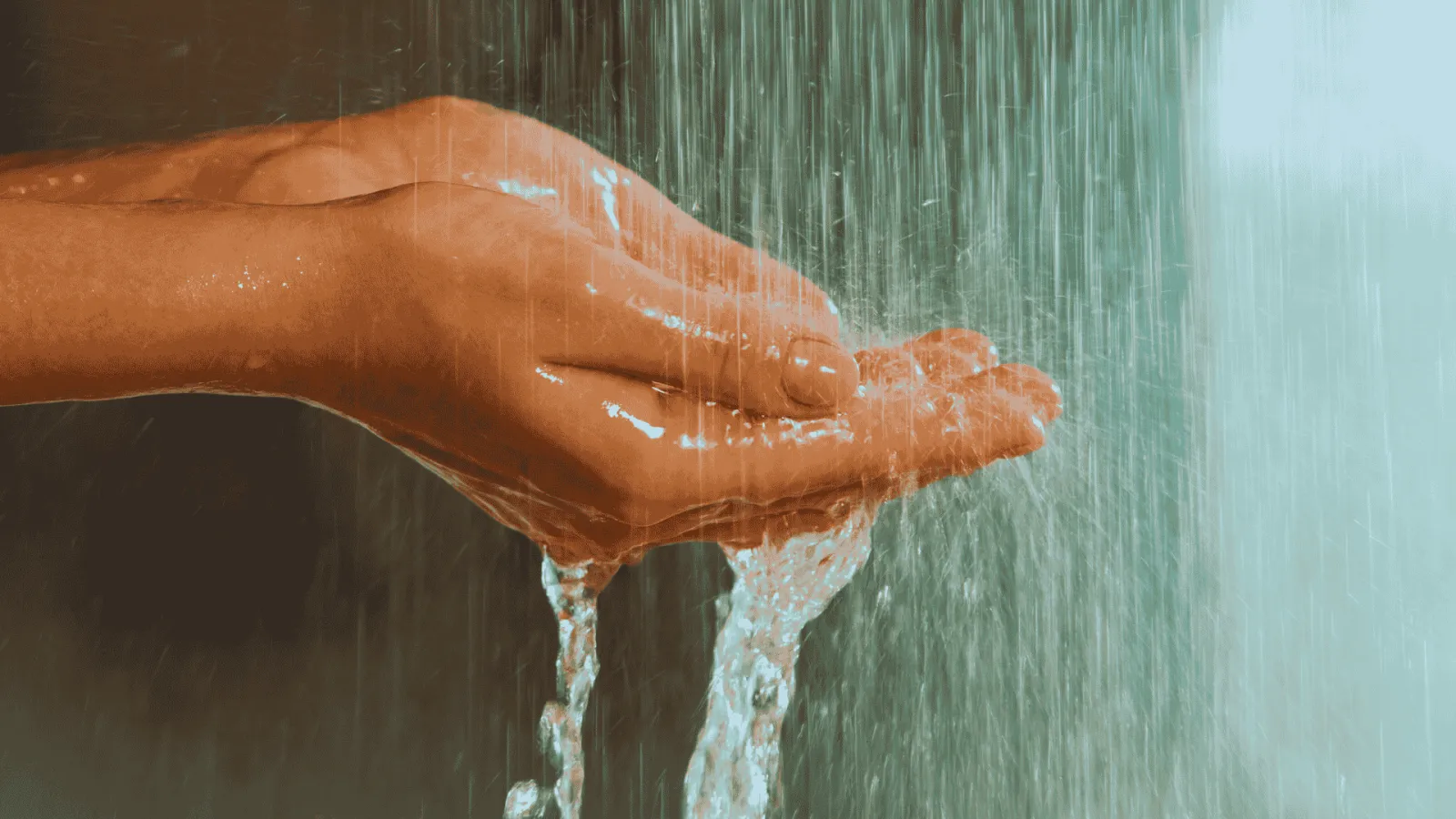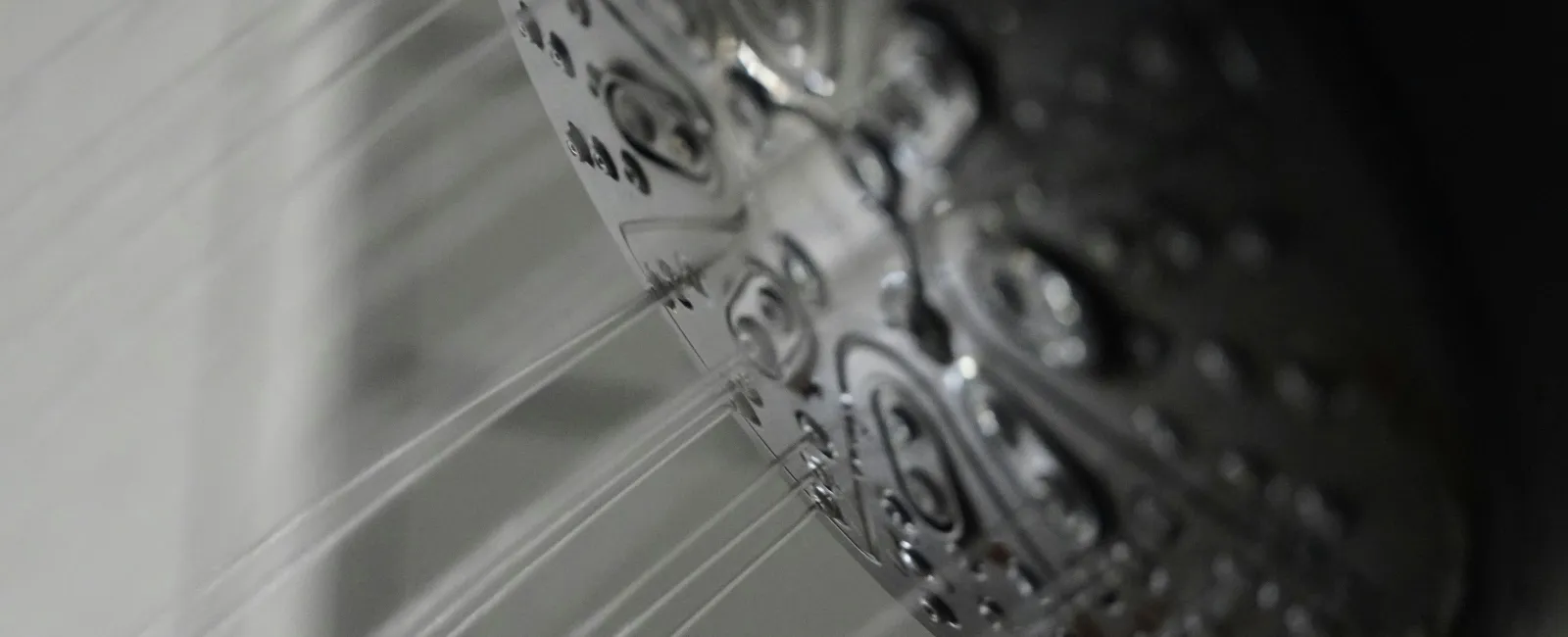
That weak trickle when you turn on the shower, and the disappointing end to a long day when all you want is a strong, hot shower.
As plumbing experts, we hear about low water pressure in showers more often than almost any other issue. The good news? Most causes of low water pressure in the shower are fixable, and many don't require a plumber. Some solutions take less than 15 minutes and cost nothing.
Before you start taking things apart, let's walk through the eight most common reasons your shower water pressure is low and exactly how to fix each one.
How to Tell If You Really Have Low Water Pressure
First, let's make sure you actually have a pressure problem. Sometimes what feels like low pressure is actually reduced flow from a water-saving showerhead or flow restrictor.
Here's a simple test: Turn on your shower at full blast and hold a one-gallon bucket under the stream. Time how long it takes to fill the bucket, and if it takes longer than 20 seconds, you have low water pressure or flow issues that need to be addressed.
Also check: Is the low pressure only in your shower, or throughout your house? Run your bathroom sink, kitchen faucet, and other fixtures. If they all have low pressure, the problem is with your home's main water supply. If it's just the shower, the issue is specific to that fixture or its supply line.
The 8 Most Common Causes of Low Shower Pressure
1. Clogged or Dirty Showerhead
This is the most common culprit when your shower has low pressure. Mineral deposits from hard water build up inside showerheads over time, clogging the tiny nozzles and restricting water flow. You might notice some holes barely spraying water while others work fine.
How to diagnose it: Look closely at your showerhead. Do you see white, crusty buildup around the nozzles? That's mineral deposits blocking the flow.
How to fix it: Remove the showerhead and soak it in white vinegar for 2-3 hours. The vinegar dissolves calcium and lime deposits. After soaking, use an old toothbrush to scrub the nozzles, then rinse thoroughly. If the buildup is severe or the showerhead is very old, replacement might be your best option.
Cost: Free if you have vinegar. New showerheads cost $15-$50.
Pro Tip: If you have hard water, clean your showerhead every 2-3 months to prevent buildup. Better yet, install a water softener to protect all your fixtures.
2. Mineral Buildup in Pipes
The same minerals that clog your showerhead also accumulate inside your pipes. Over time, this buildup narrows the pipes' diameter, restricting water flow throughout your plumbing system. This is especially common in older homes with galvanized pipes.
How to diagnose it: If you've cleaned the showerhead but still have low hot water pressure in the shower and other fixtures, pipe buildup might be the issue. This problem usually develops gradually over the years.
How to fix it: Unfortunately, you can't easily clean mineral deposits from inside your pipes. Severely clogged pipes may need replacement. Modern copper or PEX pipes resist mineral buildup much better than older galvanized steel pipes. Professional water line replacement can dramatically improve water pressure throughout your home.
Cost: Pipe replacement varies widely based on scope.
3. Faulty Mixing Valve
Notice that your shower has low hot water pressure, but cold water flows normally? The mixing valve is likely your problem. This valve blends hot and cold water to your desired temperature. When it fails or gets partially clogged, it restricts hot water flow.
How to diagnose it: Turn the shower to full hot. Is pressure weak? Now turn it to full cold. If cold water has strong pressure but hot water doesn't, the mixing valve needs attention.
How to fix it: Mixing valve repairs aren't DIY-friendly for most homeowners. The valve is inside your wall behind the shower controls. A plumber can inspect, clean, or replace the valve to restore proper water flow. This is particularly important if you consistently have low hot water pressure in the shower.
Cost: Professional valve service price varies depending on the age and model of the shower fixtures.
4. Partially Closed Shutoff Valves
Sometimes the simplest explanation is the right one. If someone recently did plumbing work, a shutoff valve might have been left partially closed. These valves control water flow to specific fixtures or areas of your home.
How to diagnose it: Look for water shutoff valves near your shower. In many homes, they're in the bathroom vanity, basement ceiling below the bathroom, or utility room. Check if they're fully open.
How to fix it: Turn each valve counterclockwise until it won't turn anymore. That's fully open. Test your shower pressure. If this were your problem, you'd notice immediate improvement in shower water pressure.
Cost: Free and takes 30 seconds.
5. Faulty Pressure Regulator
Your home's pressure regulator (or pressure-reducing valve) keeps water pressure at safe levels, typically between 40 and 60 PSI. When this device fails, it can cause low water pressure throughout your entire house, including your shower.
How to diagnose it: Buy a simple pressure gauge and attach it to an outdoor faucet. Turn on the water. If the pressure reading is below 40 PSI, your regulator might be set too low or malfunctioning.
How to fix it: Some regulators have an adjustment screw. Turning it clockwise increases pressure. However, if the regulator is old or damaged, it needs to be replaced. This job requires a plumber, as the regulator is typically located where your main water line enters your house.
6. Leaking Pipes
A leak anywhere in your plumbing system steals water pressure before it reaches your shower. Even small leaks significantly reduce pressure at fixtures. Worse, leaks cause water damage, mold growth, and wasted water that inflates your utility bills.
How to diagnose it: Look for water stains on ceilings or walls. Listen for running water when no fixtures are on. Check your water meter; if it's moving when all water is off, you have a leak somewhere. Your water bill might also spike unexpectedly.
How to fix it: Finding and repairing leaks usually requires professional help. A plumber can use pressure-testing and leak-detection equipment to locate hidden leaks and repair your water lines properly. Don't delay, leaks worsen over time and cause expensive damage.
Cost: Depends on leak location and severity
7. Sediment Buildup in Water Heater
If your shower has low hot water pressure but cold water pressure is fine, sediment in your water heater tank might be the culprit. Minerals settle at the tank bottom over time, taking up space and blocking the outlet where hot water exits.
How to diagnose it: Low hot water pressure throughout your home, not just the shower, suggests water heater sediment. This is especially common if you have hard water and haven't flushed your water heater regularly.
How to fix it: Flush your water heater to remove sediment. Attach a garden hose to the drain valve at the bottom of the tank, run it outside or to a drain, then open the valve to flush out sediment. If you're not comfortable doing this yourself, schedule professional water heater maintenance. Annual flushing prevents this problem.
Cost: DIY: Free. Professional flushing varies depending on the water heater location and access.
8. Corroded or Old Pipes
Older homes often have galvanized steel pipes that corrode from the inside out. As rust builds up, it narrows the pipe's interior, severely restricting water flow. If your home is more than 50 years old and still has original plumbing, this is likely contributing to low shower pressure.
How to diagnose it: Corrosion happens gradually. If you have low water pressure throughout your house that's worsened over the years, and your home has old galvanized pipes, corrosion is probably the issue. You might also notice rust-colored water when you first turn on faucets.
How to fix it: Corroded pipes need to be replaced. While expensive, upgrading to modern copper or PEX pipes solves the pressure problem permanently and adds value to your home. Whole-home repiping is a significant project, but it eliminates corrosion issues for decades.
Cost: Whole-house repiping varies by home size and scope.
How to Increase Water Pressure in Shower: Quick Fixes to Try First

Before calling a plumber, try these simple fixes for how to increase water pressure in a shower:
Clean the showerhead: As mentioned, this solves the problem 40% of the time. Soak it in vinegar for a few hours, scrub with a brush, and reinstall.
Remove flow restrictors: Many modern showerheads have flow restrictors for water conservation. While removing them increases water usage, it can significantly boost pressure. Check your showerhead's manual for location and removal instructions.
Check all valves: Make sure every shutoff valve in the water supply path is fully open. This includes valves under sinks, in utility rooms, and at the water heater.
Clean aerators on other fixtures: If multiple fixtures have low pressure, unscrew and clean the aerators on your faucets. Mineral buildup here affects overall house pressure. This is a simple drain and fixture maintenance task that takes just minutes.
When to Call a Professional Plumber
Some low water pressure causes require professional expertise. Call a plumber if:
- You've tried the simple fixes, but still have low shower pressure
- You have low pressure throughout your entire house
- You suspect leaking pipes or see water damage
- Your home has old galvanized pipes showing signs of corrosion
- The pressure regulator needs adjustment or replacement
- Your mixing valve requires repair or replacement
- You need your water heater flushed, but you aren't comfortable doing it
A licensed plumber has the tools and experience to quickly diagnose pressure issues that might take you hours to troubleshoot. They can perform waterline inspections to identify hidden problems and provide lasting solutions.
Preventing Low Water Pressure Problems
Once you've fixed your low shower pressure, keep it that way with regular maintenance:
Install a water softener if you have hard water: This single upgrade prevents most mineral buildup issues in showerheads, pipes, and water heaters. It's the best long-term solution for maintaining good water pressure.
Clean showerheads quarterly: A quick vinegar soak every few months prevents major buildup. This simple habit maintains strong shower water pressure.
Flush your water heater annually: This removes sediment before it becomes a problem, preventing low hot water pressure and extending your water heater's lifespan.
Schedule annual plumbing inspections: A professional can spot potential issues before they cause noticeable pressure drops. They'll check for leaks, test pressure, and recommend preventive maintenance.
Know your home's water pressure: Test it occasionally with a pressure gauge. Normal pressure ranges from 40-60 PSI. If you notice drops, investigate immediately rather than letting the problem worsen.
Understanding Your Plumbing System
Your shower water pressure depends on your entire plumbing system working properly. Water enters your home through the main supply line, passes through the pressure regulator, flows through your pipes to the water heater (for hot water), and then reaches individual fixtures through branch lines.
Problems anywhere in this chain affect your shower's performance. That's why low water pressure in the shower often points to issues beyond just the showerhead itself. The water flow depends on properly sized pipes, adequate supply pressure, functioning valves, and clear pathways throughout the system.
In homes with older plumbing systems, multiple factors often combine to create pressure problems. You might have some mineral buildup, slightly corroded pipes, and a partially clogged showerhead all working together to reduce water pressure. Addressing just one issue might help, but solving all of them restores the strong, satisfying shower you deserve.
Don't Settle for Weak Showers
Low water pressure in the shower doesn't have to be something you just live with. Most causes have straightforward solutions. Start with the simple fixes—clean your showerhead, check your valves, and test your water pressure. These DIY steps solve many pressure problems in less than an hour.
If basic troubleshooting doesn't resolve the issue, it likely requires professional attention. Whether it's leaking pipes, a faulty pressure regulator, sediment in your water heater, or corroded plumbing that needs updating, addressing these problems restores not just your shower pressure but your entire home's water performance.
The daily frustration of weak shower water pressure adds up. So does the wasted time trying to rinse under an inadequate stream. Fix the problem now, and you'll enjoy better showers for years to come.
Professional Solutions for Persistent Pressure Problems
When home fixes don't solve your low shower pressure, our experienced plumbers can diagnose and repair any water pressure issue. We handle everything from water line repairs and replacements to pressure regulator adjustments, leak detection, and complete plumbing system upgrades.
Whether you need a simple valve adjustment or comprehensive pipe replacement, we provide honest assessments and quality workmanship. Don't spend another day frustrated by weak water pressure. Contact us for fast, reliable service that gets your shower flowing strong again.


